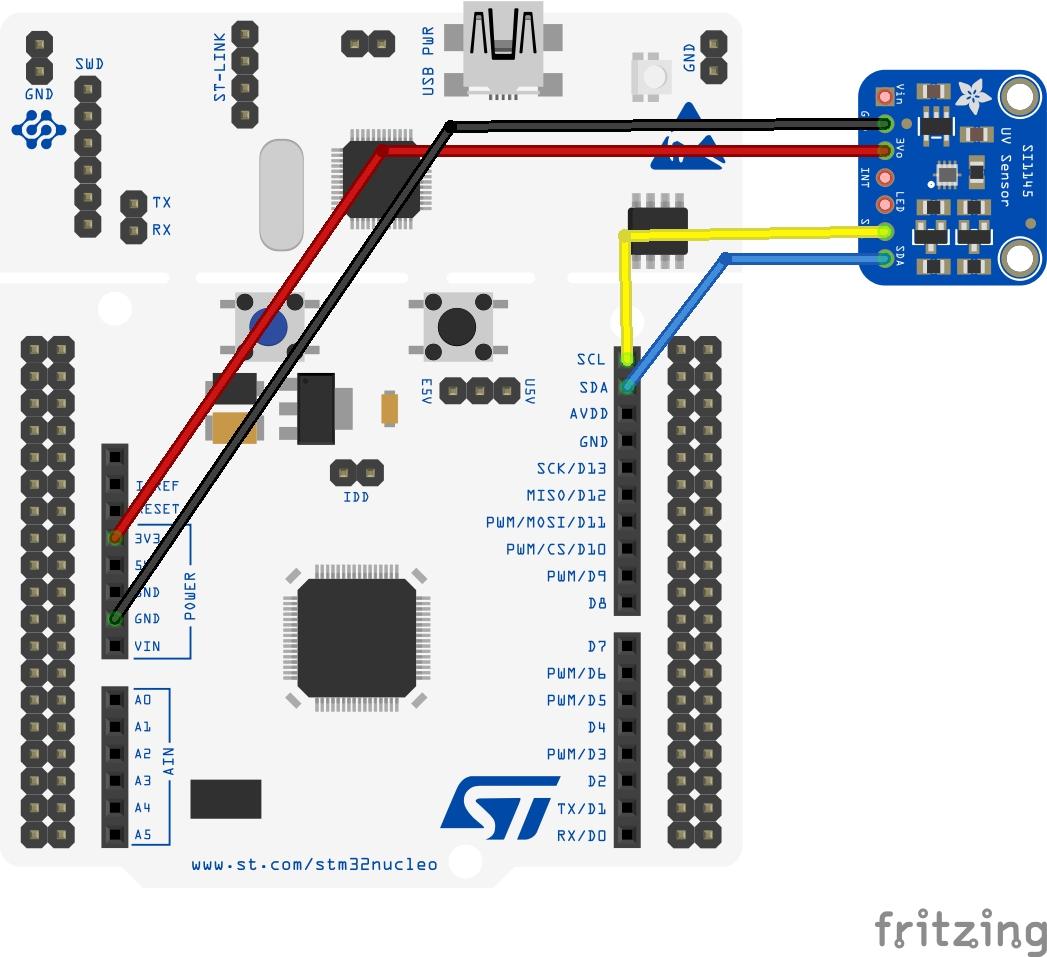In this article we connect an STM32 Nucleo to an Si1145 sensor – the code is written in the Arduino IDE
The Si1145/46/47 is a low-power, reflectance-based, infrared proximity, ultraviolet (UV) index, and ambient light sensor with I2C digital interface and programmableevent interrupt output. This touchless sensor IC includes an analog-to-digital converter, integrated high-sensitivity visible and infrared photodiodes, digital signal processor, and one, two, or three integrated infrared LED drivers with fifteen selectable drive levels. The Si1145/46/47 offers excellent performance under a wide dynamic range and a variety of light sources including direct sunlight. The Si1145/46/47 can also work under dark glass covers.
The photodiode response and associated digital conversion circuitry provide excellent immunity to artificial light flicker noise and natural light flutter noise. With two or more LEDs, the Si1146/47 is capable of supporting multiple-axis proximity motion detection. The Si1145/46/47 devices are provided in a 10-lead 2×2 mm QFN package and are capable of operation from 1.71 to 3.6 V over the –40 to +85 °C temperature range.
Parts List
Layout
Code
This example requires the Adafruit Si1145 library, you can add this via the library manager or download from https://github.com/adafruit/Adafruit_SI1145_Library
[codesyntax lang=”cpp”]
#include <Wire.h>
#include "Adafruit_SI1145.h"
Adafruit_SI1145 uv = Adafruit_SI1145();
void setup() {
Serial.begin(9600);
Serial.println("Adafruit SI1145 test");
if (! uv.begin()) {
Serial.println("Didn't find Si1145");
while (1);
}
Serial.println("OK!");
}
void loop() {
Serial.println("===================");
Serial.print("Vis: "); Serial.println(uv.readVisible());
Serial.print("IR: "); Serial.println(uv.readIR());
// Uncomment if you have an IR LED attached to LED pin!
//Serial.print("Prox: "); Serial.println(uv.readProx());
float UVindex = uv.readUV();
// the index is multiplied by 100 so to get the
// integer index, divide by 100!
UVindex /= 100.0;
Serial.print("UV: "); Serial.println(UVindex);
delay(1000);
}
[/codesyntax]
Output
Open the serial monitor window and you will see something like this
===================
Vis: 262
IR: 260
UV: 0.03
===================
Vis: 262
IR: 260
UV: 0.03
===================
Vis: 265
IR: 368
UV: 0.04
===================
Link
https://www.silabs.com/documents/public/data-sheets/Si1145-46-47.pdf


